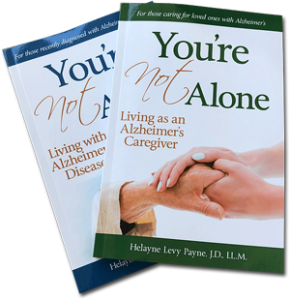
The House has passed H.R. 4334, the Dignity in Aging Act of 2019, which reauthorizes the Older Americans Act. The bill maintains funding for the work of the long-term care ombudsman program and continued authority for the National Center on Elder Abuse and National Long-Term Care Ombudsman Resource Center (NORC).
Other provisions in the bill update elder justice activities to include community outreach and education and further coordination of services to address social isolation.
For long-term care ombudsman programs, changes ensure that new funding is not supplanted by reducing local, state, or other funding sources; update references to fiscal years from 2000 to 2019; and codify that ombudsman programs may expend funds on the costs of using volunteers
Printable version of the bill fact sheet shown below »
FROM COMMITTEE ON EDUCATION & LABOR
EDLABOR.HOUSE.GOV
The Hon. Robert C. “Bobby” Scott, Chairman
Dignity in Aging Act of 2019
A bipartisan reauthorization of the Older Americans Act that provides aging Americans the
support they need to age independently and with dignity.
Background
The Older Americans Act (OAA) was first passed in 1965, alongside Medicare, Medicaid, and landmark civil rights laws, as part of President Lyndon B. Johnson’s Great Society initiative. OAA authorizes funds to state and local programs to ensure aging seniors have adequate access to food, transportation, and other basic services they need to live independently and with dignity.
OAA Today
OAA currently provides assistance to 11 million Americans age 60 and over every year. It funds a wide range of popular programs and services that millions of seniors rely upon every day, including Meals on Wheels, transportation services, and part-time job opportunities to support financial security and combat social isolation. For many older individuals, OAA programs are vital to their health, wellbeing, and independence.
However, as the population of Americans age 60 and over has grown, funding for OAA is not keeping pace. In 2010, OAA funding was $42.95 per senior in today’s dollars. Today it is $27.25 per senior.
As a result, 83 percent of low-income older Americans who experience food insecurity do not receive any meal services through OAA, according to a 2015 report by the Government Accountability Office (GAO). The same report found that two-thirds of older Americans who struggle with daily activities received limited or no home-based care services.
About the Dignity in Aging Act of 2019
The Dignity in Aging Act is a bipartisan update to OAA that responds to the challenges facing a growing generation of aging Americans.
◊ Increases Funding for All Older Americans Act Programs
The Dignity in Aging Act authorizes robust funding increases for OAA programs, which will help expand access to food assistance, transportation, and other basic services that a growing population of seniors need to live independently and with dignity. All OAA programs will receive an immediate 7 percent increase in fiscal year 2020 (FY2020) and a 6 percent increase every year thereafter. This results in more than a 35 percent total increase in program funding over the five-year reauthorization period, boosting OAA funding above its historical high watermark in FY2010.
◊ Provides Support to Caregivers
Recognizing the vital role of family caregivers in supporting aging Americans, the Dignity in Aging Act extends the authorization of the RAISE Family Caregivers Act, which requires the development of a national strategy to recognize and support family caregivers. The bill improves the process for determining what types of support caregivers need, including the use of caregiver assessments. It also eliminates the funding cap that limits the support older relative caregivers – often grandparents raising grandchildren – can receive under the National Family Caregiver Support Program.
◊ Puts a Greater Focus on Social Isolation
The Dignity in Aging Act empowers local organizations to evaluate solutions for social isolation, which greatly increases the risk of stroke, heart disease, dementia, and premature death, and incorporates social isolation screening into the health and supportive services that seniors receive. It also directs the Assistant Secretary for Aging at the Department of Health and Human Services (“Assistant Secretary”) to create a new focus on the issue of social isolation among older adults at the national level.
◊ Gives the Assistant Secretary New Tools for Research, Evaluation, and Demonstration Efforts
The Dignity in Aging Act establishes a National Research, Demonstration, and Evaluation Center for the Aging Network in the Office of the Assistant Secretary of HHS. The Center will be responsible for conducting, promoting, and coordinating research, including evaluation and demonstration projects, and related technical assistance throughout the Act. The Center will increase the repository of information on evidence-based programs and interventions available to the Aging Network. The bill authorizes $20,000,000 in additional discretionary spending annually for the new Center.
◊ Improves Economic Opportunity & Engagement for Older Individuals
The Dignity in Aging Act adds individuals who are justice-involved as a priority population for the Senior Community Service Employment Program. The bill further allows for demonstration funds to be used for multigenerational collaboration projects that provide opportunities for older individuals to participate in multigenerational activities and civic engagement activities.
◊ Strengthens the Services Available to Native Americans
The Dignity in Aging Act creates a demonstration program and authorizes over $500,000 in additional annual funding to provide grants to tribal organizations to carry out in-home and community supportive services. The bill also provides $500,000 for technical assistance for tribal organizations implementing OAA programs in FY20.
◊ Promotes the Ability of Older Individuals to Age in Place
The Dignity in Aging Act requires the Government Accountability Office to study and issue a report on federal resources to promote the independence and safety of adults living at home as they age, including resources targeting falls prevention, home assessments, and home modifications. Additionally, the bill codifies the highly successful existing Falls Prevention and Chronic Disease Self-Management Education programs into the Act. The bill also adds a focus on expanding and improving the direct care workforce through demonstration projects under Title IV as well as Title V.
◊ Helps Communities Address the Needs of Older Individuals
The Dignity in Aging Act establishes the Interagency Coordinating Committee on Age-Friendly Communities and tasks the Committee with coordinating efforts to promote safe and accessible independent living environments.
◊ Ensures Coordination with Resource Centers
Resource centers funded under the Act focus on populations that may need additional or unique services. The Dignity in Aging Act requires states and area agencies on aging (AAAs) to collect data on the services needed by these populations; the bill also requires states and AAAs to conduct outreach to identify individuals eligible for assistance under the OAA, with an emphasis on these populations. The bill further requires the Assistant Secretary to publish a list of the resource centers as well as demonstration projects funded through the Act on an annual basis.





















0 comments